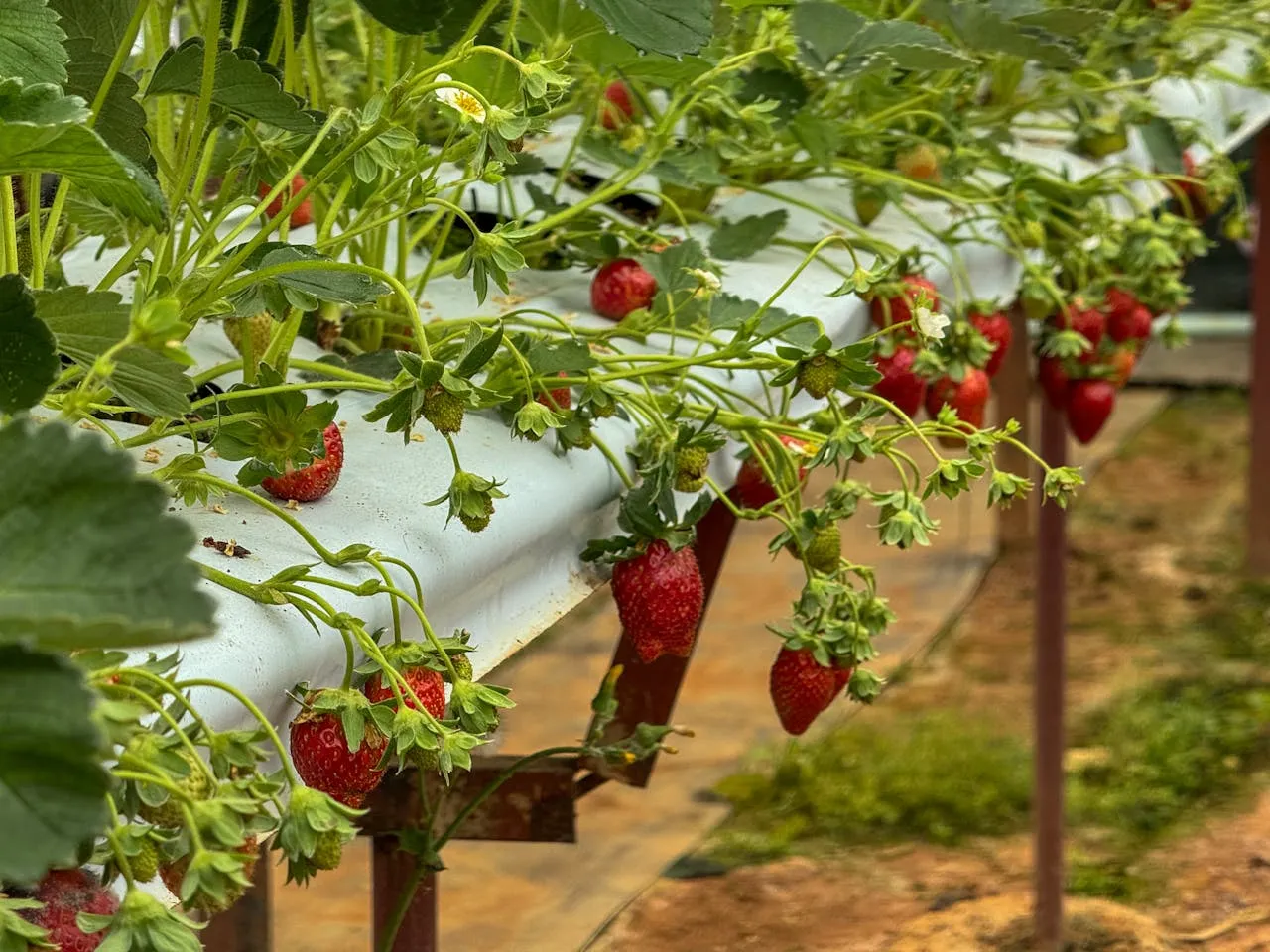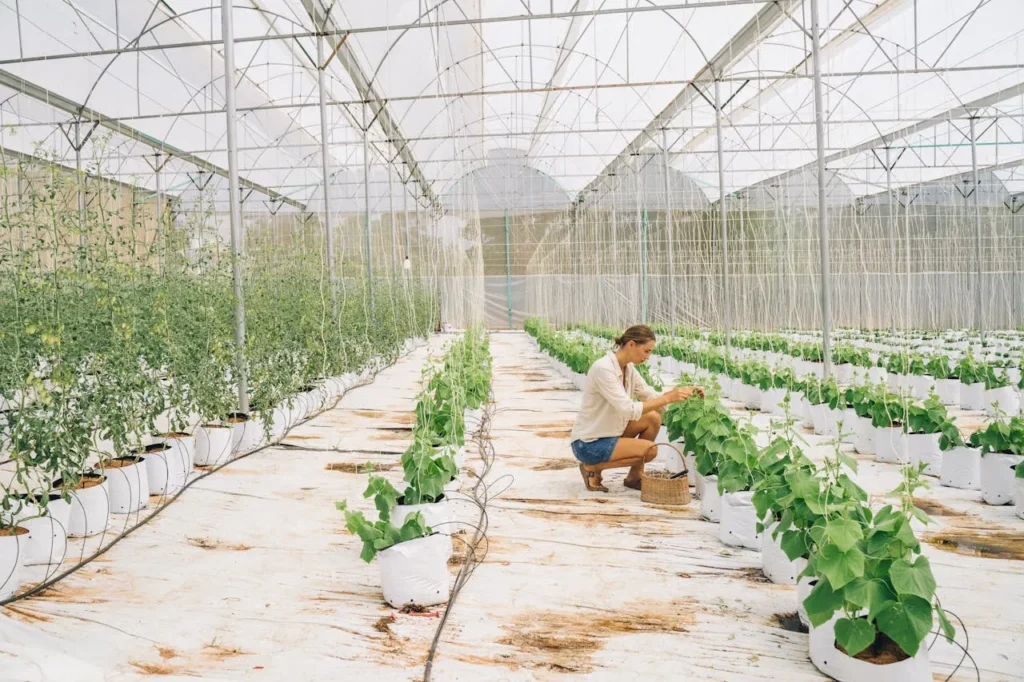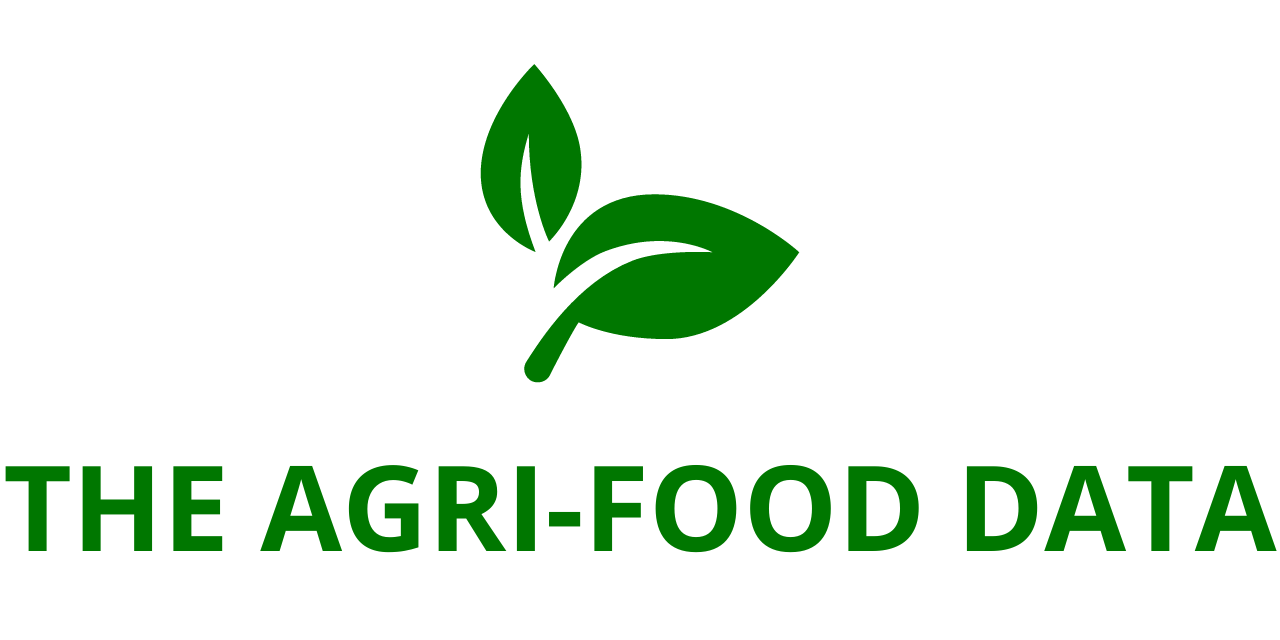
Vertical Farm AutoStore and OnePointOne’s Robotic Breakthrough Now Supplies Whole Foods
In a warehouse nestled just outside of Phoenix, Arizona, a new era of agriculture is taking shape—one that fuses advanced automation, robotics, and sustainable growing methods into a single high-tech farming solution. This is Opollo Farm, a revolutionary vertical farming system developed through a partnership between AutoStore™, a global leader in automated storage and retrieval systems, and OnePointOne, a California-based agri-tech innovator.
Here, thousands of leafy greens, herbs, and vegetables are cultivated within robotic bins that glide smoothly through a massive three-dimensional grid. The structure resembles a towering Rubik’s cube, but instead of colorful squares, it’s filled with living plants being nurtured with scientific precision. This highly automated indoor farm grows harvest-ready crops in as little as 15 days—less than half the time it typically takes in traditional farming operations.
This remarkable speed and efficiency are the result of a fully integrated and digitized approach to food production. At the core of Opollo Farm’s innovation is the fusion of robotics, artificial intelligence, environmental control, and sustainable hydroponic techniques—all packed into a compact, scalable system. The produce grown here is already making its way to local grocery shelves, specifically Whole Foods Market stores across the Phoenix area, under the “Willo” brand.
“At Whole Foods Market, we’re constantly exploring new ways to bring fresh, sustainable food to our customers,” said Chris Petroulakis, Category Merchant for Produce at Whole Foods Market. “Opollo Farm is a perfect example of how advanced technology can revolutionize local agriculture, helping to deliver high-quality, locally grown produce right to our stores faster and fresher than ever before.”
Engineering the Future of Farming
The Opollo Farm system was designed not only for performance but also for impact. It addresses several of the most pressing issues facing agriculture today: from widespread labor shortages and unpredictable supply chains to climate-related water scarcity and the rising demand for sustainable, locally grown food.
Inside the facility, the entire lifecycle of a plant—from seed to harvest—is orchestrated with robotic precision. The process begins with automated seeding, after which the plant-containing bins are moved into the cube-like storage grid. There, advanced lighting systems and a state-of-the-art climate control system maintain the ideal conditions for germination and growth.
As the plants mature, robots powered by AutoStore’s modular cube-storage architecture continuously shift them around the grid. These movements ensure that each plant receives the optimal combination of water, light, temperature, and airflow. Sophisticated sensors and software monitor the condition of each bin in real time, making minute adjustments to guarantee maximum efficiency and quality.
The result is a growing environment that is completely insulated from the variability and risk of outdoor farming. There are no seasons, no pests, no soil-borne diseases, and no pesticides. Everything is controlled, clean, and consistent.

A New Model for Urban Agriculture
Traditional farming typically requires vast tracts of land and large quantities of water, both of which are increasingly scarce resources in the face of urban expansion and climate change. Vertical farming, especially when powered by automation as it is at Opollo Farm, provides a compelling alternative.
“Traditional farming consumes vast amounts of water and land—resources that are becoming scarce,” said Sam Bertram, CEO of OnePointOne. “With AutoStore’s modular robotics and our plant-production technology, we can grow food almost anywhere using a fraction of those resources. This collaboration helps overcome the cost and scalability challenges of vertical farming, finally making locally grown produce—the number one priority for U.S. consumers—possible even in urban areas.”
In fact, the ability to locate vertical farms near or even inside urban areas is one of Opollo Farm’s most transformative advantages. By shortening the distance from farm to table, the system dramatically reduces transportation costs and emissions. This local-first model also makes supply chains more resilient, especially in times of global disruption.
Key Features of the Opollo Farm System
1. Hydroponic Growing System
Crops are cultivated in a closed-loop hydroponic setup, where nutrient-rich water circulates through the bins. This method uses up to 95% less water than conventional field agriculture while still supporting vigorous plant growth.
2. High-Density Cultivation
By leveraging vertical space and growing crops in stacked bins, Opollo Farm maximizes yield per square foot. This allows farms to be built inside existing urban infrastructure, such as warehouses and distribution centers, reducing reliance on farmland and slashing average delivery distances from 2,000 miles to just a few.
3. Automated Crop Movement
The AutoStore-powered cube system enables autonomous bin movement within the farm. Bins travel to and from a single access point, or “Port,” for harvesting or maintenance, drastically cutting labor requirements and enhancing operational efficiency.
4. Controlled Environment Agriculture (CEA)
From temperature and humidity to lighting and carbon dioxide levels, every aspect of the growing environment is meticulously managed. This ensures a stable and predictable output of clean, pesticide-free produce all year long.
5. Scalable, Modular Architecture
Opollo Farm’s design is inherently scalable. Whether the goal is to serve a neighborhood co-op or a regional grocery chain, the system can expand modularly to meet growing demand while maintaining consistent quality and yield.
6. Reduced Carbon Footprint and Improved Freshness
Because crops are grown within a short radius of where they’re sold, food miles are drastically minimized. This results in fresher products for consumers and a significant reduction in greenhouse gas emissions associated with long-haul transportation.






